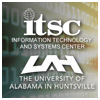A Ten Year Record of Space Based Lightning Measurements
| Title | A Ten Year Record of Space Based Lightning Measurements |
| Publication Type | Conference Paper |
| Year of Publication | 2009 |
| Authors | Graves, S, Conover, H, Jones, S, Hardin, D, Harrison, S, Drewry, M, Nair, M, Goodman, M, Blakeslee, R |
| Conference Name | American Geophysical Union |
| Date Published | 12/2009 |
| Conference Location | San Francisco, CA |
| Keywords | UAHuntsville |
| Abstract | The Lightning Imaging Sensor (LIS) is a space based instrument used to detect the distribution and variability of total lightning (cloud-to-cloud, intracloud, and cloud-to-ground lightning) that occurs in the tropical regions of the globe. LIS was launched in November 1997 aboard NASA’s Tropical Rainfall Measuring Mission (TRMM). The LIS sensor contains a staring imager which is optimized to locate and detect lightning with storm-scale resolution of 3-6 km (3 at nadir, 6 at limb) over a large region (550-550 km) of the Earth's surface. The field of view (FOV) is sufficient to observe a point on the Earth or a cloud for 80 seconds, adequate to estimate the flashing rate of many storms. The instrument records the time of occurrence of a lightning event, measures the radiant energy, and estimates the location. The excellent performance of LIS has lead to numerous scientific discoveries such as: The global lightning flash rate is on the order of 40 flashes per second as compared to the commonly accepted value of 100, an estimate that dates back to 1925. Seventy percent of all lightning activity occurs in the tropics, with the global distribution dominated by the summertime lightning activity over the N. Hemisphere land masses. A new understanding on the interplay among the intensification of updraft, lightning bursts, and the onset of severe weather lead to establishment of a validation campaign that further explored relationships between lightning and severe weather. Findings to date indicate that high flash rate storms have a high probability of becoming severe. A ten year global lightning data archive has been developed from the Lightning Imaging Sensor. This archive is maintained at the Global Hydrology Resource Center (GHRC) in Huntsville Alabama, one of NASA’s Earth science data centers, managed by the Information Technology and Systems Center of UAHuntsville. This is the most comprehensive global lightning data archive ever produced and is noteworthy for its high spatial resolution, detection efficiency, coverage, and ten year plus (ongoing mission) period of record. All LIS data are available to the research community and may be accessed from the GHRC. LIS data are organized by areas, flashes, groups and events. Areas are distinct regions of the earth which have one or more flashes in a given orbit. They are meant to roughly correspond to individual thunderstorm cells. Flashes are collections of pulse groups which are both spatially and temporally "close" to each other. Groups are collections of pulse events occurring within a two millisecond time span, which are also physically adjacent to each other. Groups may be interpreted as individual lightning strokes. Events are individual sensor pixel transients, or optical pulses. They are the basic building blocks which are collected into groups, clustered into flashes, and finally arranged into areas. The archive of lightning data from LIS and its predecessor the Optical Transient Detector along with derived products, validation data, and terrestrial lightning data make up a unique resource for atmospheric electricity and lightning studies. |
| URL | http://adsabs.harvard.edu/abs/2009AGUFMAE32A..07C |
- Log in to post comments
- Google Scholar




